Organizing by Cards
- Alan Emrich
- May 24, 2020
- 10 min read
ETO Series 24 May 2020 Update
For this update series, we must preface with:
Our focus currently remains on “the larger picture” of combined ETO volume games and making sure that, when you connect them, they do so as seamlessly as possible. This has been much on the design team’s minds of late.
Because it is already published, Thunder in the East has been our Petri dish for playtesting and strengthening these multi-volume game sinews. Per publisher GMT’s instructions, we are preparing an “update kit” for your TITE game. This project is known, internally, as TITE2 – it is not the second edition of that game, but more an improved ETO-izing of it.
If you would like to join the TITE2 playtest, it is available as a Vassal kit, with rules and scenarios located here (scroll down to the TITE2 Vassal kits; you can't miss it).
You will see screenshots from that Vassal playtest kit throughout this article.
Card Assisted and Organized

The evolution of cards in Frank Chadwick’s ETO series has been a marvel. In the original Thunder in the East, each Faction’s cards existed to extend the gameplay narrative by allowing events and actions for players to supplement their economies, spark their military, or play some politics as the mortar between the bricks of standard turn-to-turn play. These events added the opportunity to prepare the delivery of some surprises or to somewhat recover from your plights.
As we stepped back and took a broader perspective of the entire ETO series, we have been measuring and re-measuring the whole with each step (“measure twice, cut once”). As a result of this intensive planning, we noticed that many event cards are duplicated in other game volumes, and that volume’s narrative “holes” are filled in with cards specifically to tell its story.
The evolution of ETO features four main types of cards now:
Events cards, but updated for better balance and gameplay functionality (with the help of more uniformity in text and graphics). These now feature defined entry times (some arrive as reinforcements) and reentry times (each has a “cool down” period, usually a number of Seasons before it returns to its Faction’s deck). This adds an intriguing new dimension to the card selection and play sub-game.
Intelligence cards, which are each Faction’s asymmetrical micro-event “smokescreen” cards. You receive one of these, if available in your deck when you select a Major card (so that it appears that you might have drawn two Minor cards instead of one Major card). By their nature, they also add another dash of flavor to the historical narrative of gameplay.
Mobilization/Change Box cards for Small nations to smooth their initial deployment and, on their reverse sides, show that nation’s Change Box organization. Some also have a mini-OOB mat to show their long-term reinforcements that they receive after entering play.
OOB cards that replace the OOB mat. Yes, we know that arranging things on an OOB mat is what we, as wargamers, are used to, and we originally presented things that way in Thunder in the East, but we need to think of each volume less as a “stand-alone” game and more as a module that links together with other games in the series. We will explain this later in this article…
Of course, there will also be cards to remind you of a theater’s current weather and its effects, when a theater is time-locked, reminders of the wilderness theater effects for the Arctic and Desert, frostbite effects, having Naval Air Superiority, and other useful “card size” player aids.
The Latest Events in Event Cards
Upon further reflection thanks to intense playtesting we discovered that a more granular “cool down” period worked wonderfully to better-tailor each Event card (rather than the “New Years’ bonanza” granting Factions a big stack of returning cards each January). That is, some cards require exactly 2 Seasons before they return to your hand (denoted as “+2S” for “place ahead 2 Seasons on the Turn Track”), others might be out of play for up to 6 Seasons (“+6S”); others might a bit random (e.g., “+1d3S” for a random 1 to 3 Season delay).
In this way, we are able to make each faction’s cards not only more accurate when considering their when they were used historically, but also more interesting as a gameplay/decision element when considering your card selections and timing their play. Players skillful at thinking ahead and developing plans supported by their card selections will usually find tangible on-map rewards for this superior gameplay ability.
For the development team, our trick was to then create a Game Turn track that would facilitate the return of these cards. We did, and it handles units and cards with aplomb. This redesign also allowed us to allow space for the expanded Weather table:


Well, shoot! Having that Turn Track/card arrival system in place, we quickly deduced that cards could be brought in on a reinforcement schedule just as units are. That was a big “ah ha!” moment as now Event cards could enter play “over time” or “in a sequence” in this paradigm. This allowed for much better historical verisimilitude. Since that realization, we have “story-boarded” every card on a spreadsheet with its game entry time and where it sets up in each scenario so players are escorted to a more realistic situation as they assess their deck, hand, and when the rest of their cards will enter play.

We are pleased to report, this has proven very intuitive to use and has worked very well in playtesting.
Showing Some Intelligence Cards
One small squawk from players was that their opponent knew when they have selected only one card or two, meaning they will know if a Major or two Minor cards were selected and might be able to deduce something beneficial from that knowledge. Well, this would be a very slight benefit, but we are filling in that gap with the addition of (“stack free”) Intelligence cards, one of which can be selected (for free) when you take a Major card that Month. Thus, you will receive two cards, so your opponent won’t know if you chose a Major + Intelligence card or two Small cards.
Their design sees Intelligence cards as very Minor Events, each tailored to its Faction’s “way of war” vis-à-vis intelligence. When played, they create a “moment” at the game table but only for a small benefit (they are not meant to be particularly “planed around” or singularly decisive in their effects). The playtest cards currently on our virtual game table (using vassal) are shown here:
Welcome Aboard with Mobilization Cards
Rather than listing each Small nation’s setup and mobilization data, line by line, in the rules, we have opted to show (rather than tell) these data on a card. The visual presentation has been very well-received, but the best part is on the reverse side! After using the front side to mobilize that Small nation, the reverse side shows its specific Change Box (thus it is designed to “supplement” the Change Box area of your Faction Display, should that country align with you).
In addition, that reverse side shows that Small nation’s “mini-OOB mat” with long-term additions representing that Small nation's continuing war effort with unit upgrades and acquisitions. I.e., those that have contracted with larger nations’ manufacturers for new aircraft models get them delivered over time.
The Key to Unit Outlines
OOB changes are primarily shown as illustrations on each unit’s OOB mat or card. The color and type of that unit’s border holds the first key to understanding its comings, goings, and upgrades as follows:
Arriving Units (511.4):
SOLID Black Border: Reinforces directly into play; Air units arrive on the Air Display mat, Ready Flown.
D-A-S-H-E-D Black Border: Reinforces into its Force Pool.
D•O•T•T•E•D Black Border: Reinforces into its Change Box or Draw Pool (as appropriate).
Improving Units (511.2):
SOLID Green Border: Immediately upgraded in place subject to other conditions specified for that particular event. These illustrations are often supplemented with arrows showing units that are replaced by another or flipped to show their improved side.
Withdrawing Units (511.1.4):
SOLID Pink Border: Withdrawn directly from play. We used pink instead of red for better color-blind contrast.
L―O―N―G―D―A―S―H Pink Border: Withdrawn directly from play but returns later. Place that unit ahead on the OOB mat at its future arrival date (see 510.2).
D-A-S-H-E-D Pink Border: Withdrawn from Force Pool.
D•O•T•T•E•D Pink Border: Withdraw from the Change Box or Draw Pool (as appropriate).

And, yes, we used pink for withdrawals instead of red because it actually provides a distinctive look and better contrast on the cards. Also, red us used in different places for other things, so, yeah... pink.
OOB Cards Up Off the Mat
The concept of removing (or, least, minimizing) the OOB mats (and their sprawling footprints on the game table) that we, as wargamers, are so used to for placing and organizing our reinforcements by using cards instead is a very new way to approach the presentation of these data. This is certainly the cleverest, and will no doubt be the most controversial, idea we are developing for cards until players “wrap their heads around it.”
It is probably best to explain the Big Idea here with an example:
Say you’re playing Thunder in the East. As the Axis player you will have an OOB Transfer (abbreviated “Xfr”) card series (i.e., typically front-and-back, but sometimes over multiple cards when necessary) for The Middle Sea and Decision in the West indicating their reinforcements they historically sent to your TITE game or the withdrawals they demanded from it. These transfers are denoted by a date (Month and Year). Stuff that was originally built in the East and historically never left the TITE game is shown on a very small Axis OOB mat. Here are some samples (you can click on the scroll left < and scroll right > symbols on the center-sides of these displays):
Now suppose you’re playing The Middle Sea. As the Axis you will have you have a similar arrangement: an OOB card series for Thunder in the East and Decision in the West. Here are some samples. Note that the cards in the TMS for TITE are synchronized to TITE’s cards for TMS. That is, things that “leave here to go there” are reflected symmetrically on both volume’s cards relating to that other volume.
While all these data might be much easier to take in on a large OOB mat, granted, here’s the clever bit: when you play a combined game of TITE and TMS, you do not use either of those OOB card sets! That is because, due to the increased scope from playing multiple volumes, those decisions regarding which units to switch between theaters, why, and when, are now yours to make! If you thought it was a bad idea to withdraw Stukas from Russia to advance the situation in the Mediterranean… you don’t have to. If Italy should have sent a larger (or smaller) contingent to Russia, that’s your decision to make! The OOB cards demanding those transfers in a stand-alone, single-volume game go away because you are now in command of those decisions! You will play with fewer OOB cards, not more, each time you combine volumes into a larger gameplay experience.
Other Card Tricks
This OOB card system also allowed us to take some other things off the OOB mats and, literally, put them in player’s hands. So, in addition to OOB Transfer cards (which are removed as games are combined), there are also OOB Technology cards indicating the steady arrival of new units and unit types into each Faction’s Force Pools. Note that these OOB Technology cards often have a small cost to activate them (attached to their sometimes-big benefits) as well as their historical “cool down” time in Seasons between arrival back into that Faction’s hand.
Here are some interesting cards and their stories:

Soviet Emergency Mobilization has moved from an Event card to an OOB card. We did this to remove the “hardwiring” of the Soviet’s selection of this card. Instead, they just pull the trigger and conduct their Emergency Mobilization.
The upside is that the Soviet player can now select the usual one or two Event cards that month in addition to conducting Emergency Mobilization.
The downside is that Emergency Mobilization only lasts for three turns now instead of four (and that difference roughly equates in value to that Month’s Event card selection, so everything still "comes out in the wash.").
Managing Soviet Emergency Mobilization in this manner opens up the Soviet's “player space” allowing them to consider some Summer, Event card-assisted shenanigans instead of the previous, predictable (almost-forced) Emergency Mobilization card selection. Now the Soviets have both while retaining gameplay balance.
German Refit & Reorganize is an OOB card that allowed to put some crucial decisions about what the Germans did, during the war, to make adjustments. Many reinforcements are the result of playing this card, but now the Axis player controls their sequencing. The war in the east might be going quite differently than history and you can “adjust” to circumstances not only with your normal Monthly Event card selections, but also by tailoring your R&R OOB Technology card selection.
In playtesting, it has been fascinating to watch the Axis player agonize over these delicious choices. The conflict is often expedient ("there is no tomorrow") versus longer-term planning (and how long it will take the card to return back to their hand).

The German Ju-52 Transfer card represents something very special in the war. Originally designed as a bomber but primarily used as a transport, in whole-of-ETO game terms, there are exactly two Ju-52 units and one of them was primarily used to train pilots. It was, however, occasionally called up to help during a surge in demand for air transports (such as airdrops on Holland, those readied for Sealion, the relief effort at Demyansk and Stalingrad, and the build-up and later relief efforts at Tunisia).
With this card, you always have a Ju-52 unit available "on call," but must summon it into play by placing this card on the map during the 1st week of a Month. During that month, the Germans’ ability to built new or upgrade existing Air units is restricted. Once removed from the map (and returned to training duty), aircraft production and training goes back to normal.

American Armor reflects the time period where UK units were replenished and reorganized with the flood of American tanks into them.
That is, the UK 4-2-[6] Tank Divisions trickle into play along with the Change Box additions of everything they can build. Like their German Panzer Division and Soviet Guards Tank Corps counterparts, adding these thicker slices of Heavy beef make the Allied OOB much more effective on the ground.
By the time of the Third Battle of El Alamein, the UK 8-[4] Semi-Motorized Infantry Corps units there would lead the way chasing Rommel all the way back to Tunisia.
In our next update, we will take another look at the evolutionary “ETO-izing” of Thunder in the East by focusing on another core aspect of the game.

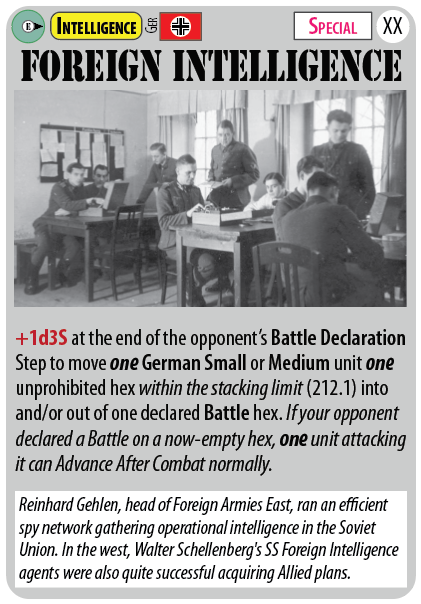

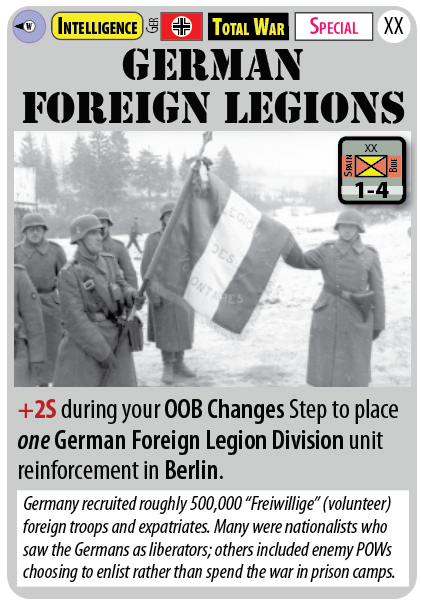

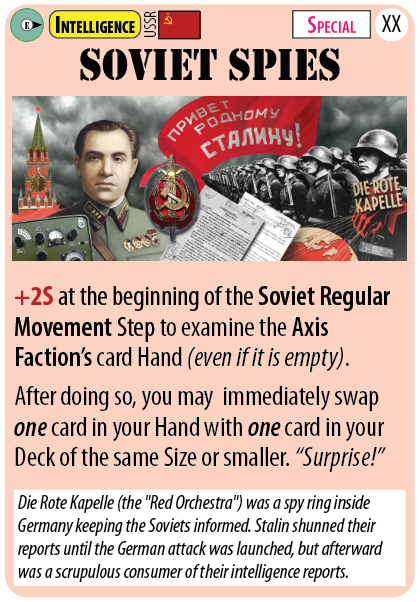

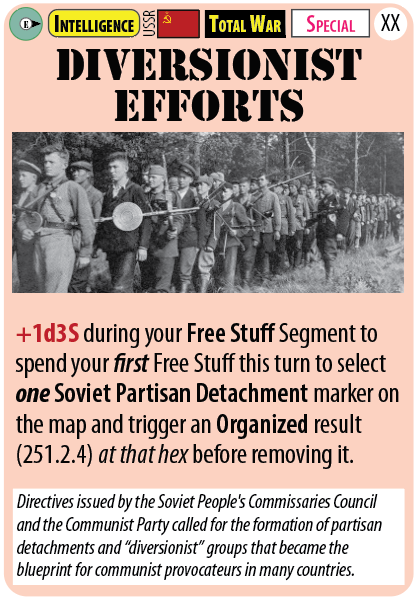

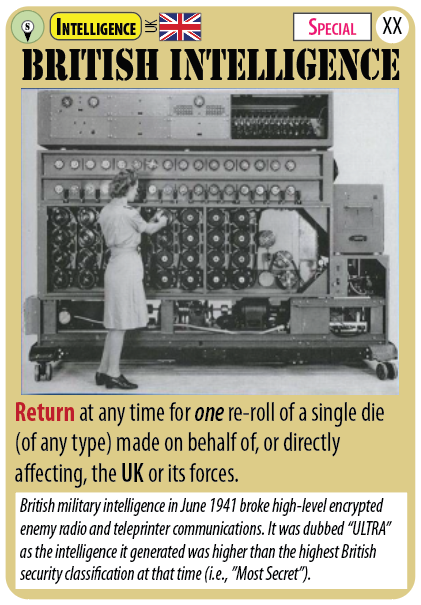

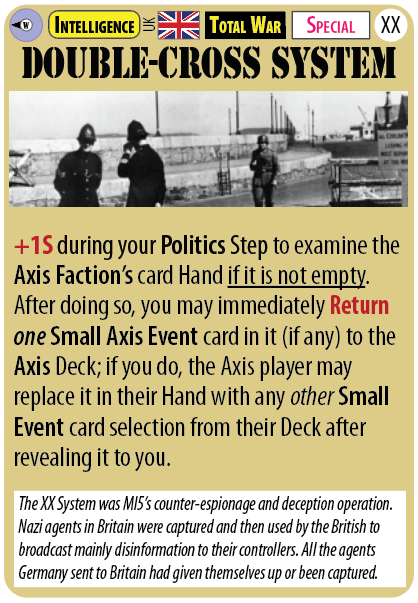

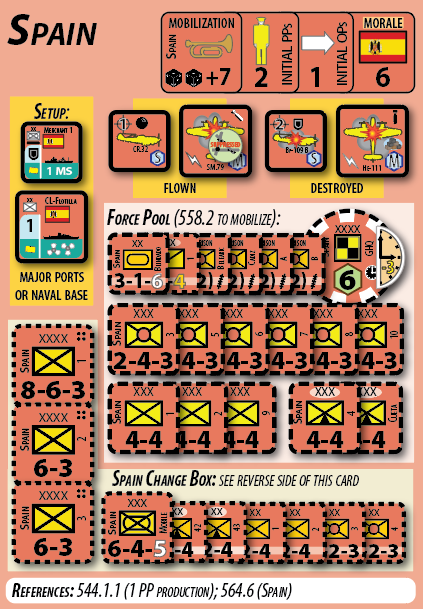

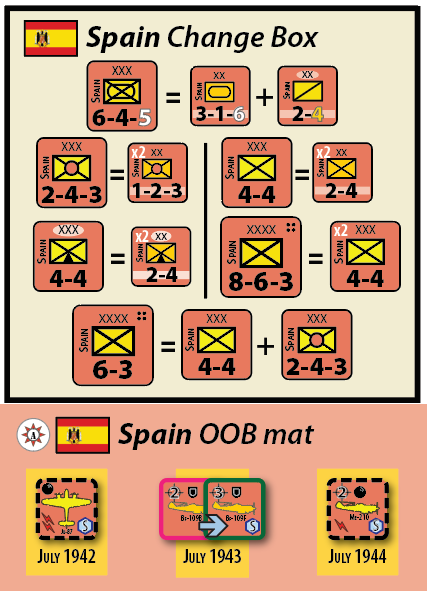

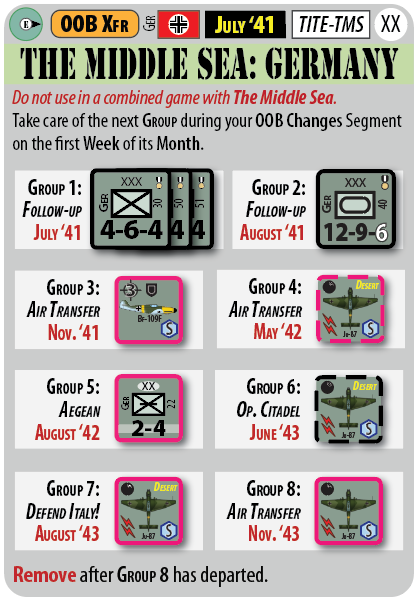

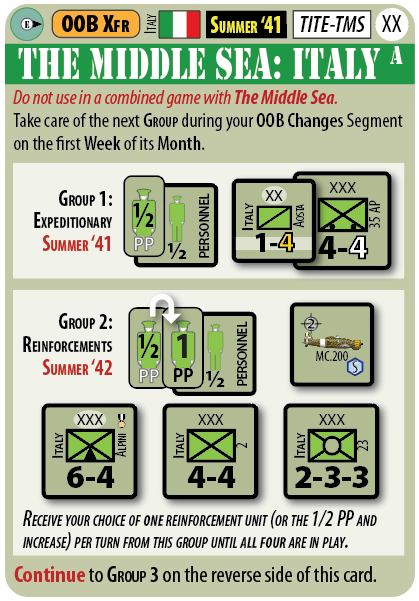

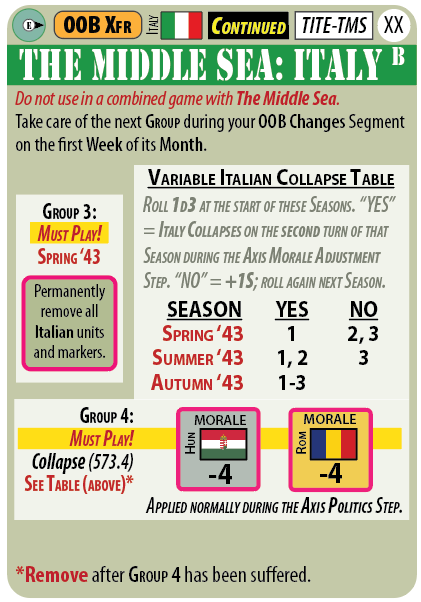

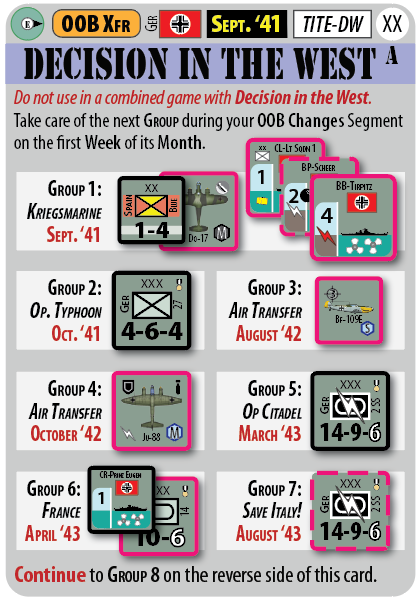

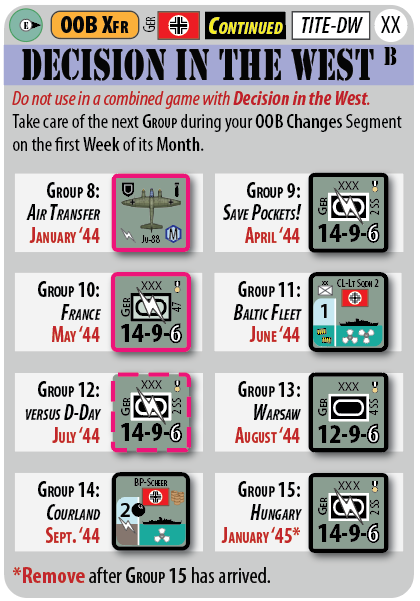

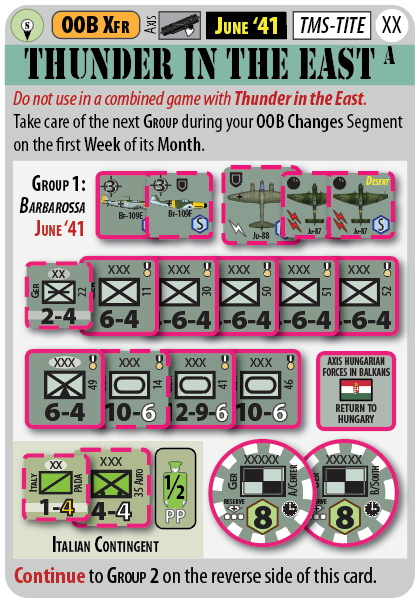

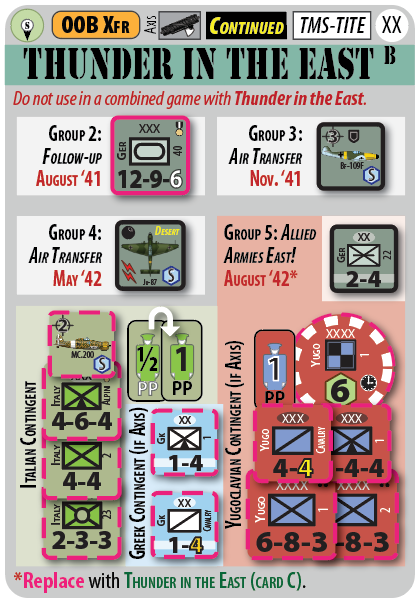

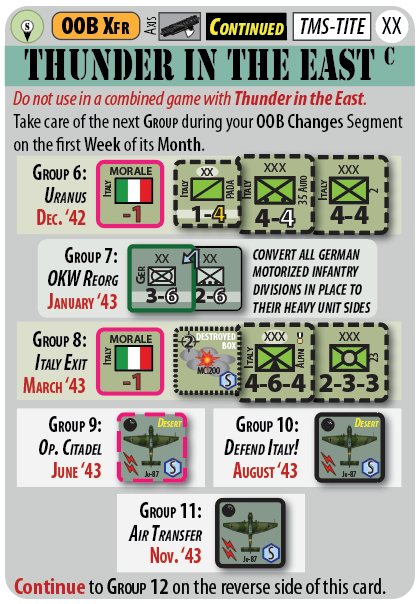

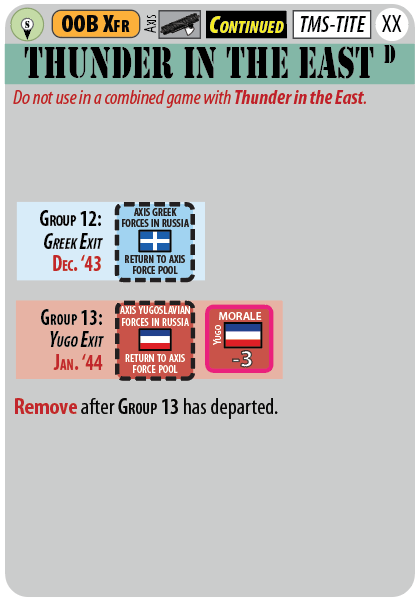

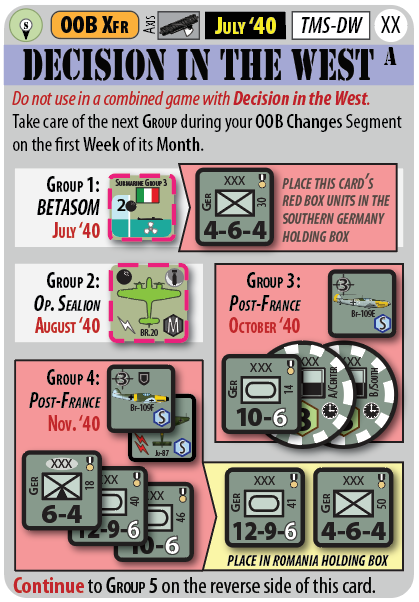

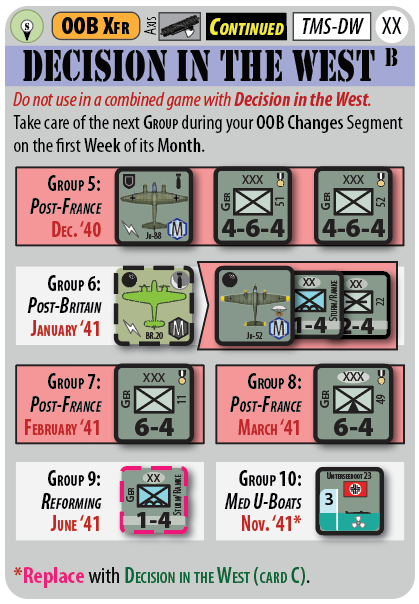

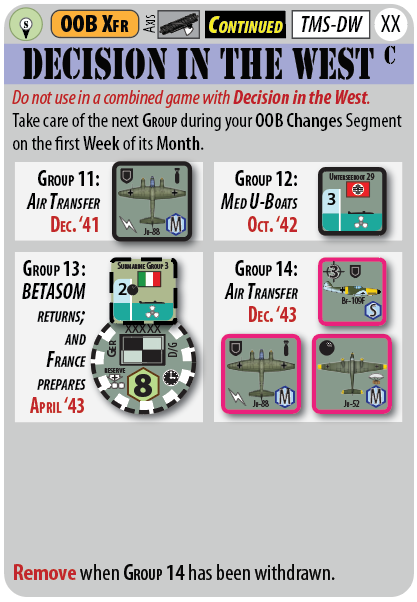








It all began with the big idea to think about the Whole Series as a unit, and them getting each of the modules to synchronize completely, rather than focus on each module first and hope everything works out right in the end. We're making a big investment in "looking forward" right now, but can already see it paying off.
Thanks for posting this update. It is fascinating to see both the new cards/counters and the thinking behind what you are doing (and how things change) as time goes along.